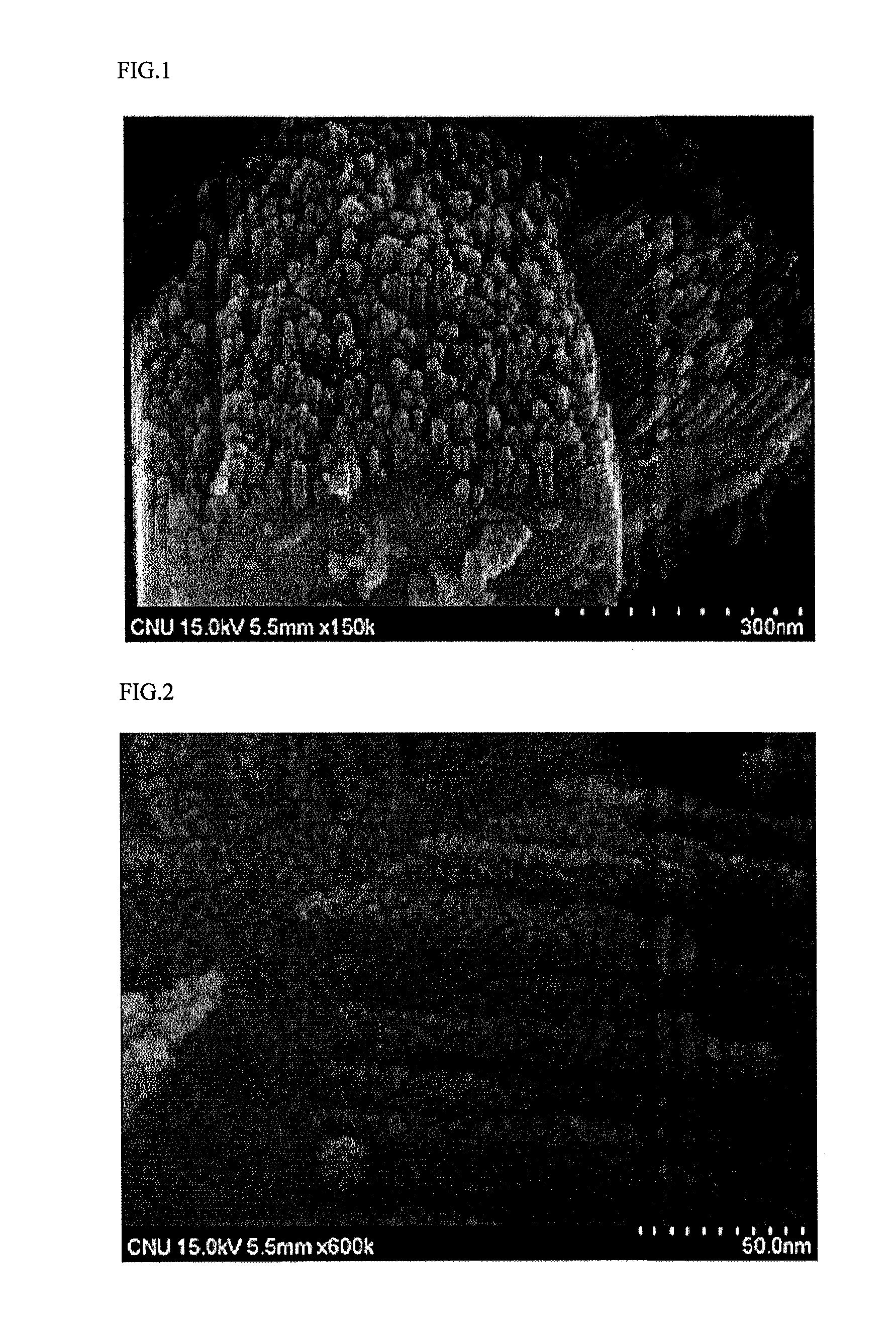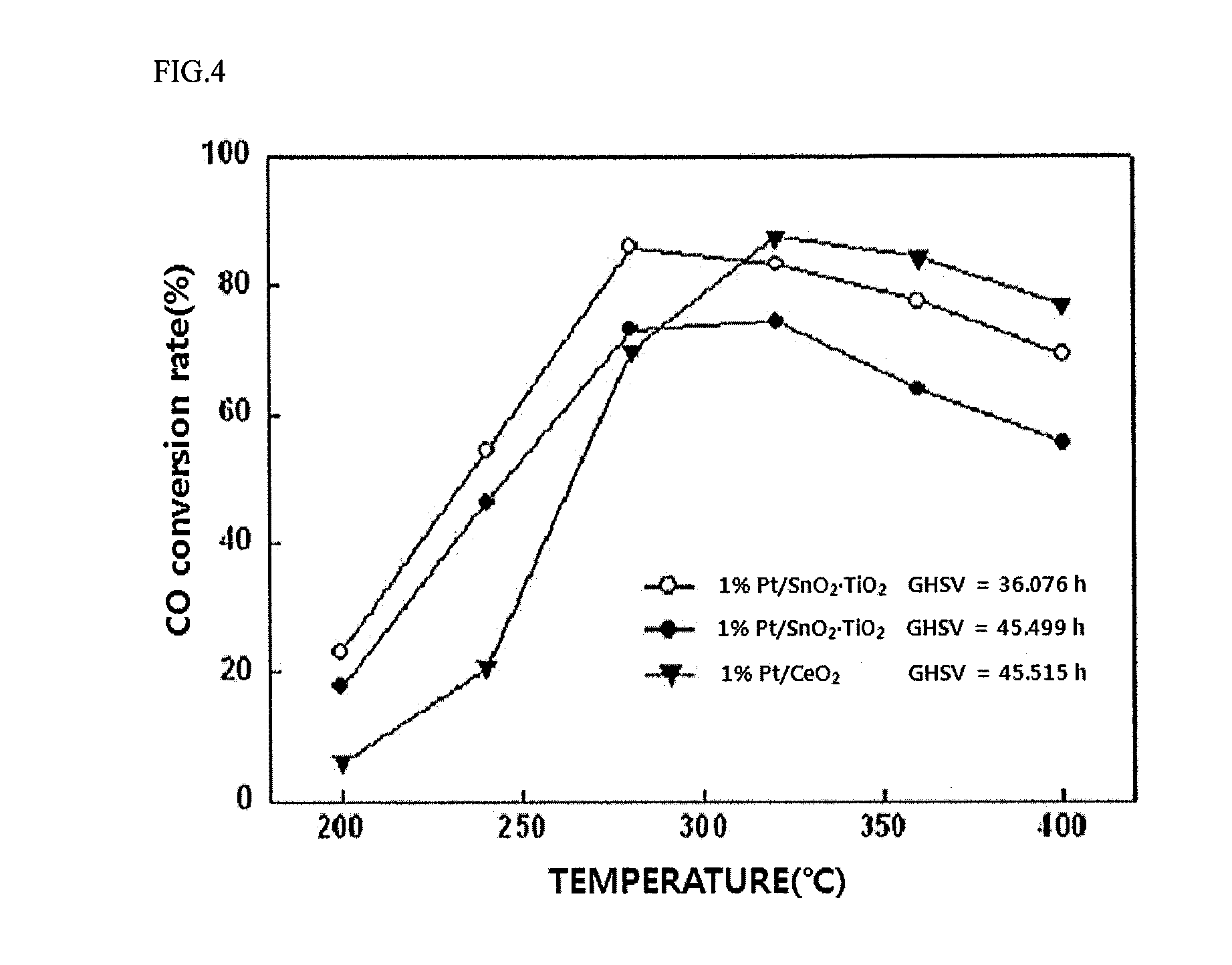Metal complex of fluorinated tin oxide and titanium oxide and preparation method thereof
a technology which is applied in the field of metal complex of fluorinated tin oxide and titanium oxide, can solve the problems of unstable demand and supply of fossil fuels, and the use of fossil fuels is not expected to be decreased for a long tim
- Summary
- Abstract
- Description
- Claims
- Application Information
AI Technical Summary
Benefits of technology
Problems solved by technology
Method used
Image
Examples
example
Preparation of Metal Complex
[0040]Preparation of Fluorinated Tin Oxide
[0041]In order to prepare a tin oxide, 22.3 g of SnCl4-5H2O and 1.14 g of a hydrofluoric acid solution (50%) were put into 60 ml of distilled water and stirred on a magnetic plate for 20 minutes. With slow addition of an ammonia solution (25 wt %) to the stirred mixture, precipitation was induced and stirring continued. When precipitation did not occur any longer, the addition of the ammonia solution was stopped, and stirring continued for an additional 30 minutes to obtain slurry. The obtained slurry was put into a forced convection dryer and dried at a set temperature of 120° C. for 24 hours. After drying, the resultant solids were lightly ground and then put into a heating furnace and calcined at 750° C. for 90 minutes to obtain fluorinated tin oxide particles.
[0042]2) Coating of Titanium Oxide in Rutile Phase
[0043]The tin oxide as obtained in the step 1) was put into 50 ml of a TiCl4 solution (0.4 M) and left ...
preparation example
Preparation of Catalyst Using Metal Complex According to Present Invention
[0049]With 1 g of each support prepared in Example and Comparative Example, 1 wt % platinum was coated using an impregnation method. The sample coated with platinum underwent a drying process and a calcination process to prepare a catalyst for a water-gas shift reaction.
experimental example
Comparison of Low Temperature
[0050]Water-Gas Shift Reaction
[0051]0.0478 g of the prepared catalyst was put into a 1 / 4 inch quartz tube and underwent a reduction process using 5% H2 / N2 mixed gas at 400° C. for 1 hour, and then, a temperature of the reactor was lowered to 200° C. Steam and a mixed gas (59.81% H2, 19.92% N2, 1.06% CH4, 10.1% CO2, and 9.11% CO) were injected to the reactor to adjust a gas hourly space velocity (GHSV) to 36,076 h−1 and 45,499 h−1, and then a low temperature water-gas shift reaction was carried out. At each time of increasing a temperature by 50° C., a carbon monoxide conversion rate was recorded. Further, in order to make a comparison in catalyst performance, using a CeO2 catalyst coated with 1% platinum, an experiment was carried out in the same condition at a GHSV of 45,499 h−1. Reaction conditions and a gas composition for the low temperature water-gas shift reaction are shown in Table 1 and Table 2, respectively. A result of the experiment was as sho...
PUM
| Property | Measurement | Unit |
|---|---|---|
| Temperature | aaaaa | aaaaa |
| Temperature | aaaaa | aaaaa |
| Length | aaaaa | aaaaa |
Abstract
Description
Claims
Application Information
 Login to View More
Login to View More - R&D
- Intellectual Property
- Life Sciences
- Materials
- Tech Scout
- Unparalleled Data Quality
- Higher Quality Content
- 60% Fewer Hallucinations
Browse by: Latest US Patents, China's latest patents, Technical Efficacy Thesaurus, Application Domain, Technology Topic, Popular Technical Reports.
© 2025 PatSnap. All rights reserved.Legal|Privacy policy|Modern Slavery Act Transparency Statement|Sitemap|About US| Contact US: help@patsnap.com



